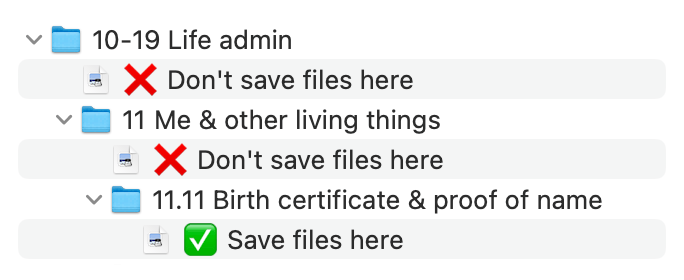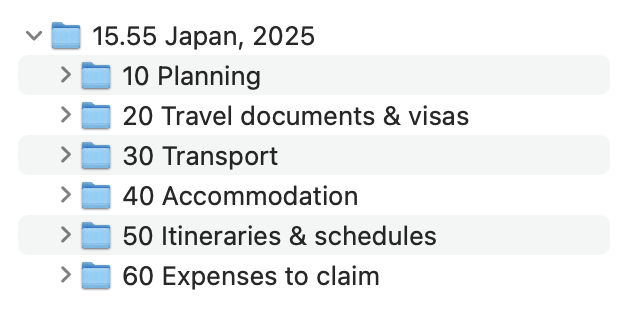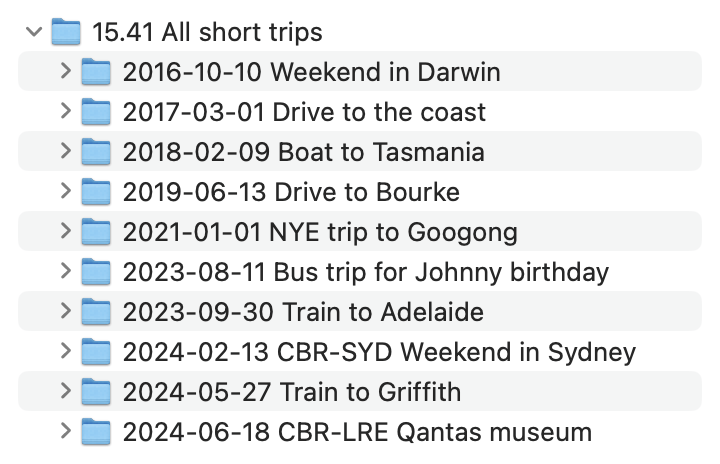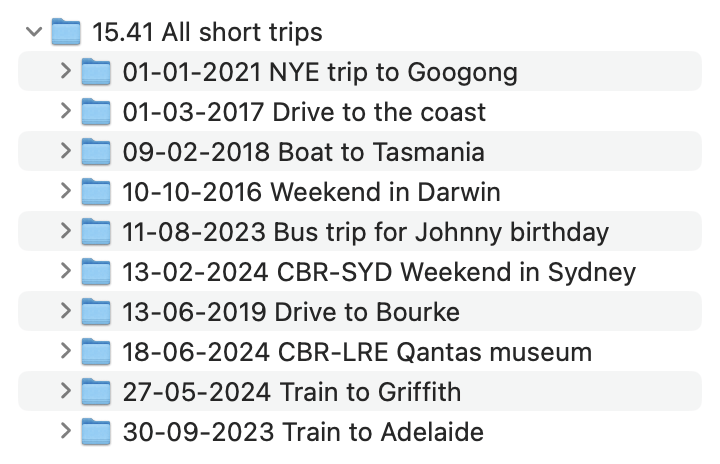Structure vs. content
Before we start saving things, let's take a quick look at the structure of the Johnny.Decimal system. Just to reinforce why we put things where we do.
The number before the decimal tells us what area and category we're in. It gives our system its structure. The number after the decimal is the ID. This is where we store our content.

So if we wanted to find folder 15.52 in our file system, we can see that:
-
It's in area
10-19because it begins with1. -
It's in category
15. -
And its item number is
.52.
Saving files in ID folders
We save our stuff in our Johnny.Decimal ID folders. Spreadsheets, documents, scanned receipts, references, emails, images, and whatever else you're organising.

We don't save things in areas or categories
We never save things in area or category folders -- these are structural only. They're there to guide us to our content.
If you genuinely can't find an ID that feels right, you might need to spend some time expanding your system to include a new category, or even a new area.
Saving files in subfolders
I used to be anti-subfolder but I've folded like a cheap suit. There are plenty of cases where it makes sense to use subfolders.
However
There's no point to any of this if you just go back to putting your stuff in boxes-in-boxes-in-boxes-in-boxes. Stick to one level of subfolders, label them neatly, and don't have too many.
For example, our trip to Japan is quite complex. So we've organised by subfolder.1

If we didn't have subfolders there would be files all over the place. They're helping us find our things quickly, confidently, without stress. So it's all good.
Sorting by year-month
Let's take this even further. Whether you're naming subfolders or files, if you use the date correctly it solves so many problems.
For example, the ID 15.41 All short trips contains all of our short trips. The sort of thing that you don't really plan, you just book and go.
You can fit a lifetime of short trips in one ID if you create a new subfolder for each trip, and start it with the yyyy-mm-dd date like this:

Remember, year-month must come first. If you reverse the above dates, the folder would sort like this and be chaos:2

This works for so many things
Purchase receipts is another nice example. You can fit a lifetime of receipts in one ID if they all start with the date, then what it is and where you bought it.
Also consider things like utility bills and finance statements. Don't save them with the gibberish names from the utility company or bank. Using the year-month method, you can store hundreds of neatly-sorted, easy-to-find documents.